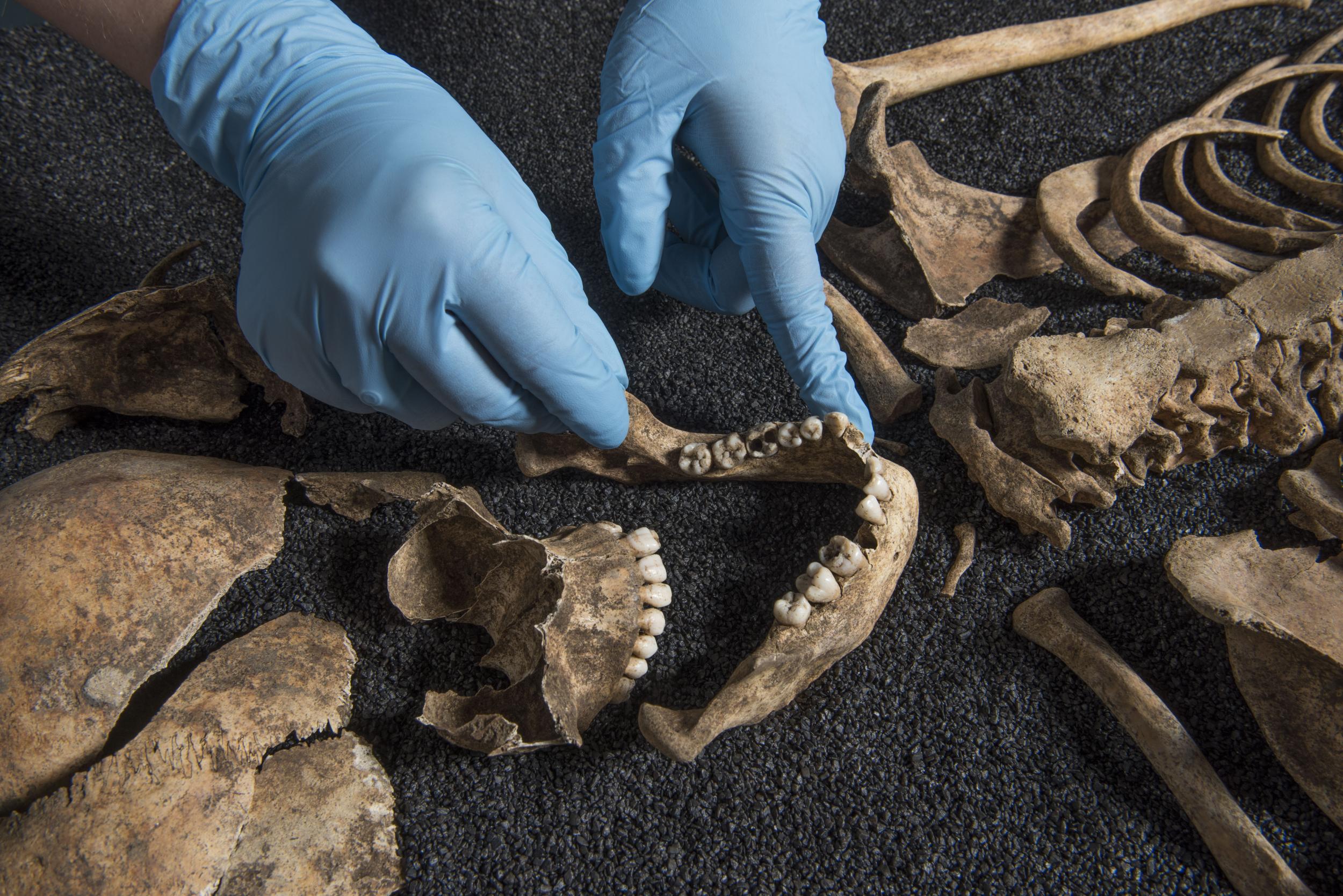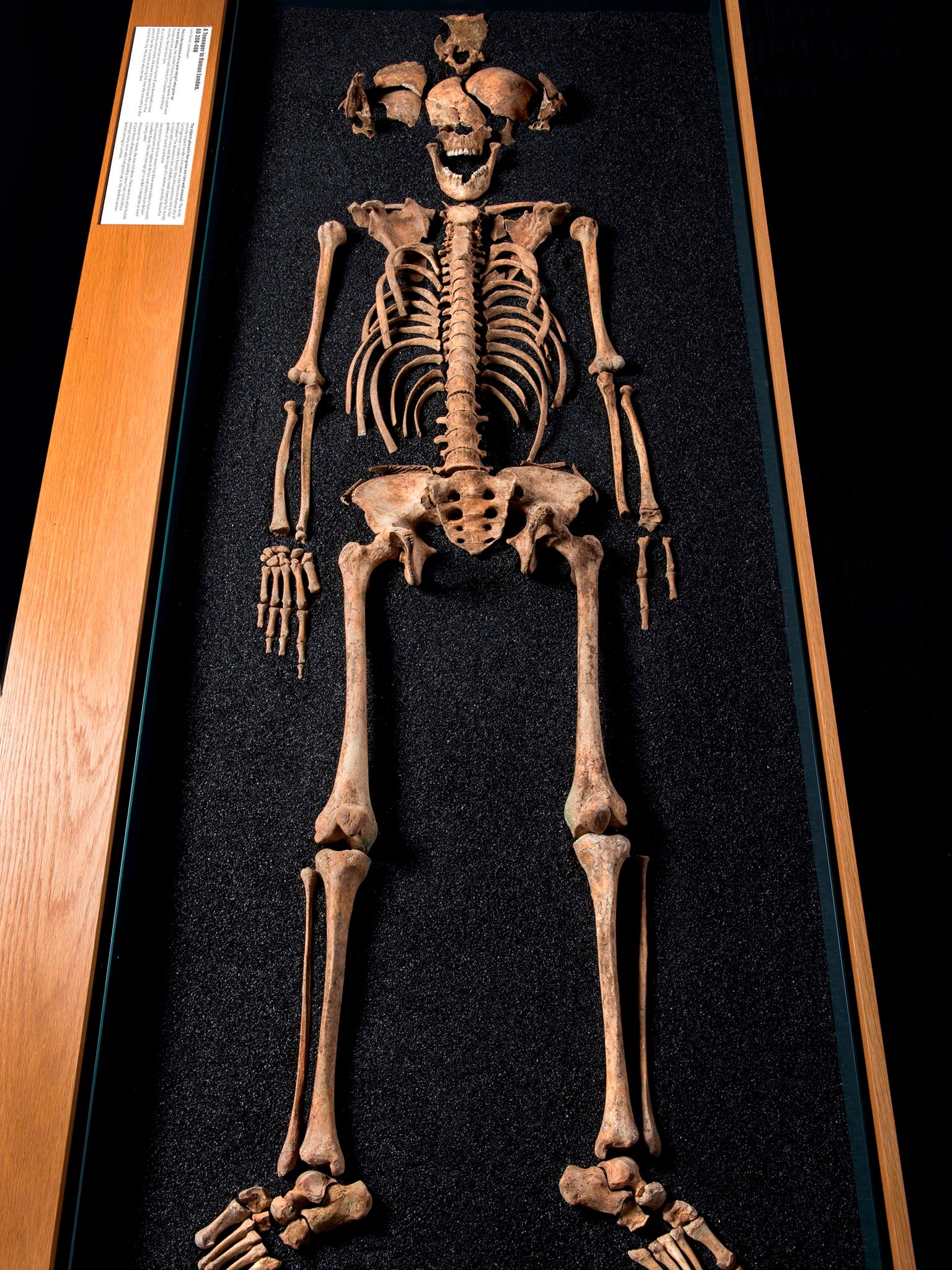‘Phenomenal’ ancient Chinese skeleton discovery in London graveyard casts new light on Roman society
Bones unearthed in a Southwark cemetery prompt excitement among archaeologists and historians

Your support helps us to tell the story
From reproductive rights to climate change to Big Tech, The Independent is on the ground when the story is developing. Whether it's investigating the financials of Elon Musk's pro-Trump PAC or producing our latest documentary, 'The A Word', which shines a light on the American women fighting for reproductive rights, we know how important it is to parse out the facts from the messaging.
At such a critical moment in US history, we need reporters on the ground. Your donation allows us to keep sending journalists to speak to both sides of the story.
The Independent is trusted by Americans across the entire political spectrum. And unlike many other quality news outlets, we choose not to lock Americans out of our reporting and analysis with paywalls. We believe quality journalism should be available to everyone, paid for by those who can afford it.
Your support makes all the difference.Two ancient skeletons unearthed at a cemetery in London may have been of Chinese origin, overturning longstanding assumptions about the history of the Roman Empire and Britain's capital city.
Using cutting-edge techniques, a team of archaeologists and scientists examined dental enamel samples from over 20 sets of human remains dated from between the 2nd and 4th centuries AD.
Dr Rebecca Redfern, curator of human osteology at the Museum of London, revealed two of the skeletons found at the site in Lant Street, Southwark, had been identified as possibly being of Chinese origin.
"This is absolutely phenomenal. This is the first time in Roman Britain we've identified people with Asian ancestry and only the 3rd or 4th in the empire as a whole", she told BBC Radio 4's The World at One,
The find challenges the dominance of the traditional view that Roman Britain, and specifically “Londinium” as it was then known, was a relatively homogenous society.
It also suggests the Roman and Chinese empires may have had more interaction than many historians had previously thought.

Crucially though, it raises the possibility that trade took place between Rome and China outside of the famous Silk Road.
While previous archaeological work has shown the multicultural nature of the ancient city and its importance as a major trading hub, this is only the second time the bones of an individual of possibly Chinese origin have been found at a Roman site, the first being the discovery of a possibly Asian man in Vagnari, Italy.
Writing in The Journal of Archaeological Science, Dr Redfern said: “The expansion of the Roman Empire across most of western Europe and the Mediterranean, led to the assimilation and movement of many ethnically and geographically diverse communities.
"Its power and wealth meant that it also had trade connections for raw materials and products, such as silk throughout Europe, Africa and also to the east, including India and China.
"Many people travelled, often vast distances, for trade or because of their occupation, for example in the military, or their social status, for example if they were enslaved."
Archaeologists and historians are divided as to the the explanation behind the possible presence of Chinese individuals in Roman Britain.
The findings raise the possibility that Chinese traders settled in the area, and may have even set up their own trading communities.
However, in her journal article, Dr Redfern went on to add: “It may well be that these individuals were themselves or were descended from enslaved people originating from Asia, as there were slave-trade connections between India and China, and India and Rome."
Join our commenting forum
Join thought-provoking conversations, follow other Independent readers and see their replies
Comments